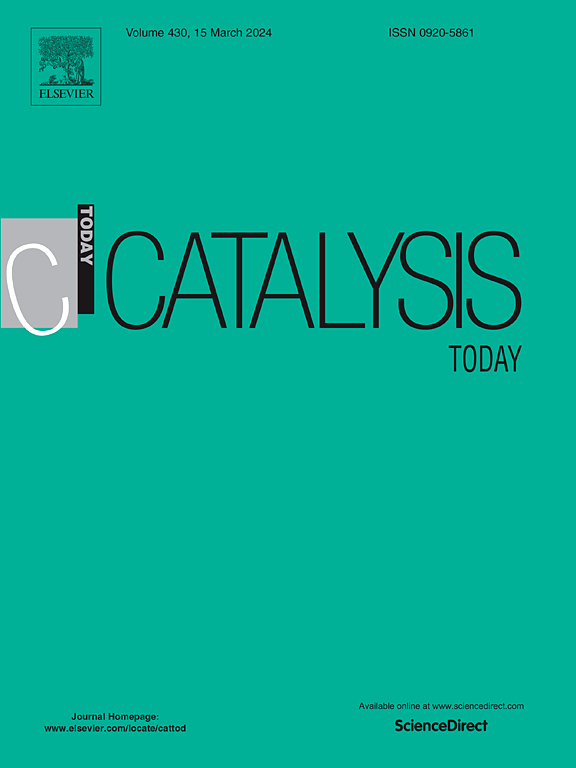Recent advances in sulfur-resistant DeNOx catalysts for stationary source emissions: A state-of-the-art review
IF 5.3
2区 化学
Q1 CHEMISTRY, APPLIED
引用次数: 0
Abstract
Selective catalytic reduction (SCR) has become the mainstream technology for industrial flue gas purification, widely adopted at stationary sources due to its high nitrogen oxides (NOx) removal efficiency, environmental friendliness, and proven reliability. However, the presence of SO2 in flue gas leads to catalyst poisoning and deactivation, posing a major challenge to the system's core components. Therefore, understanding sulfur-induced deactivation mechanisms and developing sulfur-resistant strategies are critical for optimizing SCR systems, with significant theoretical and practical implications. This review systematically examines recent advances in the understanding of sulfur poisoning mechanisms, sulfur-resistant design strategies, and regeneration technologies for SCR catalysts. Distinct deactivation mechanisms have been identified across various non-precious metal-based catalysts, such as V, Mn, Ce, Cu, and Fe. Subsequently, sulfur-resistance strategies — including element doping, bimetallic synergy, support optimization, morphological engineering, and operational parameter adjustment — are comprehensively discussed. Moreover, regeneration methods for sulfur-poisoned catalysts are systematically evaluated, considering both cost-effectiveness and environmental sustainability. Finally, the design strategies and future challenges for the development of sulfur-resistant deNOx catalysts are highlighted, aiming to guide their practical application in real-world flue gas purification systems.
用于固定源排放的耐硫脱氧催化剂的最新进展:最新的回顾
选择性催化还原(SCR)已成为工业烟气净化的主流技术,由于其高氮氧化物(NOx)去除效率、环境友好性和可靠性而被广泛应用于固定源。然而,烟气中SO2的存在会导致催化剂中毒和失活,对系统的核心部件构成重大挑战。因此,了解硫致失活机制和开发抗硫策略对于优化SCR系统至关重要,具有重要的理论和实践意义。本文系统地回顾了SCR催化剂在硫中毒机制、抗硫设计策略和再生技术方面的最新进展。不同的失活机制已被确定在各种非贵金属催化剂,如V, Mn, Ce, Cu和Fe。随后,全面讨论了抗硫策略-包括元素掺杂,双金属协同作用,支持优化,形态工程和操作参数调整。此外,考虑到成本效益和环境可持续性,系统地评估了硫中毒催化剂的再生方法。最后,重点介绍了耐硫脱氮催化剂的设计策略和未来面临的挑战,旨在指导其在实际烟气净化系统中的实际应用。
本文章由计算机程序翻译,如有差异,请以英文原文为准。
求助全文
约1分钟内获得全文
求助全文
来源期刊

Catalysis Today
化学-工程:化工
CiteScore
11.50
自引率
3.80%
发文量
573
审稿时长
2.9 months
期刊介绍:
Catalysis Today focuses on the rapid publication of original invited papers devoted to currently important topics in catalysis and related subjects. The journal only publishes special issues (Proposing a Catalysis Today Special Issue), each of which is supervised by Guest Editors who recruit individual papers and oversee the peer review process. Catalysis Today offers researchers in the field of catalysis in-depth overviews of topical issues.
Both fundamental and applied aspects of catalysis are covered. Subjects such as catalysis of immobilized organometallic and biocatalytic systems are welcome. Subjects related to catalysis such as experimental techniques, adsorption, process technology, synthesis, in situ characterization, computational, theoretical modeling, imaging and others are included if there is a clear relationship to catalysis.
 求助内容:
求助内容: 应助结果提醒方式:
应助结果提醒方式:


